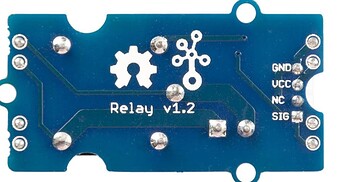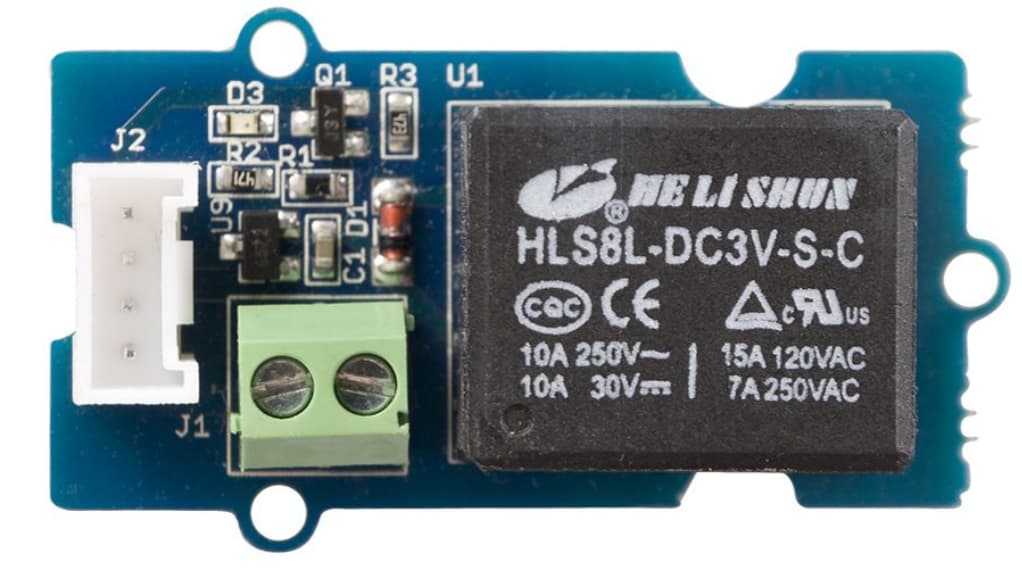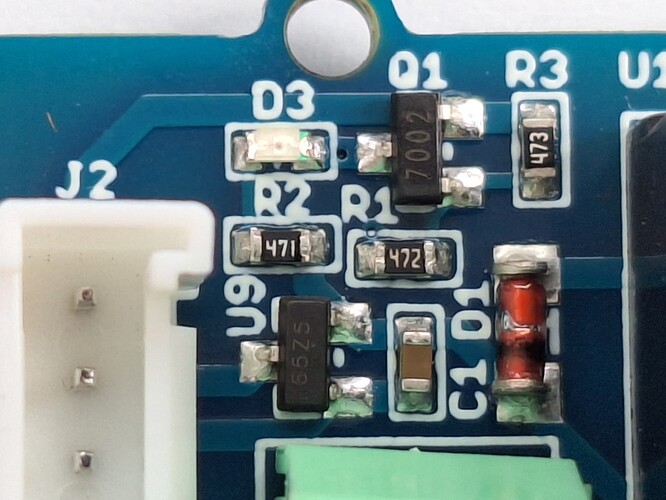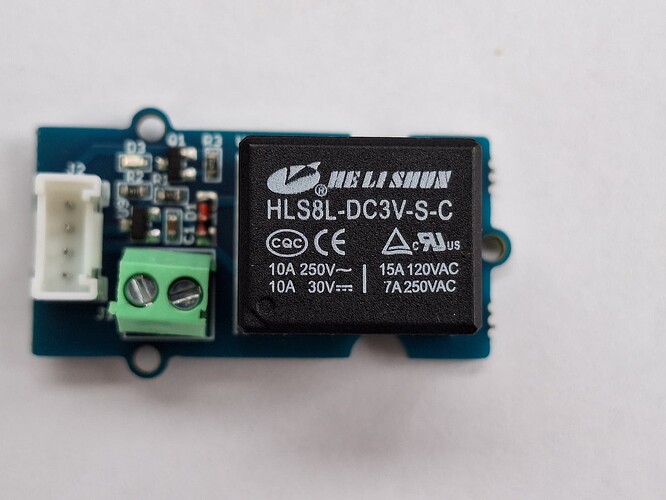It is version 1.3 <-- that is what is printed on the back.
So this module but yours says v1.3 instead of v1.2?
I ask because Seeed don't list a v1.3 on their site. There is a v1.3 of the Grove Arduino Shield, however.
Replacing R1with a lower value or placing a 4k7 resistor in parallel with it might be all it takes to get your module to work. Might be an interesting educational project for the students. On the other hand, since the Grove relay draws >120 mA from the Arduino 5V regulator, you would be better off using the other relay if you need to power anything else from the Arduino.
This does not make sense, because the pump is connected to a complete separate circuit...
Post an annotated schematic, It is confusing as to how things are connected.
Here are some simple rules:
Gil's Crispy Critter Rules, they apply to processor hardware:
Rule #1. A Power Supply the Arduino is NOT!
Rule #2. Never Connect Anything Inductive to an Arduino!
Rule #3 Don't connecting or disconnecting wires with power on.
Rule #4 Do not apply power to any pin unless you know what you are doing.
LaryD's Corollary's
Coro #1 when first starting out, add a 220R resistor in series with both Input and Output pins.
Coro #2 buy a DMM (Digital Multi-meter) to measure voltages, currents and resistance.
Violating these rules tends to make crispy critters out of Arduinos.
Hint: It is best to keep the wires under 25cm/10" for good performance.
I know!! I don't understand this too, but it is the case! I can post a movie to show it.
I noticed that indeed both Seeedstudio and the local reseller show v1.2 of the relay, but this is what I got:
I think the resistors are still the same:
And this is the relay itself:
Yes, 100mA @5v is a lot. I may have to replace them with 'non-grove' relays combined with the converters that @jim-p proposed. I hope the show wants to swith them. I will try to put a 4k7 resistor in parallel anyway before going the route of replacing the relay's. I'll let know of my findings.
That circuit (post #18) does indeed look badly designed. (1) R3 should go between ground and the label D1 on R1 and not to Q1's base. As it is, only about 90% of the voltage at D1 (the D1 near R1) gets to the base of Q1. That would not be bad for a BJT transistor but, even worse, (2) they appear (picture post #26) to have substituted a mosfet (2n7002) for the original BJT transistor where that voltage drop could be crucial and which anyway is out of spec. You could reduce R1 to say 220 ohms in the hope of improving the behaviour of the relay module.
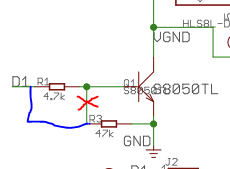
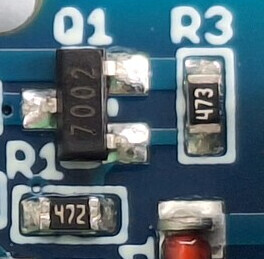
2n7002: https://www.mouser.ch/datasheet/2/308/1/NDS7002A_D-2317584.pdf
The curse of the cheap Chinese knock-off strikes again!
Incidentally, also on StackExchange: Grove relay stuttering - Arduino Stack Exchange
On StackExchange, you've said that the Arduino is spuriously resetting. Look also at post #15 here for a possible solution to such electrical noise problems.
If you are going to try that, then you might as well do it right.
Use a 1K to 1.5K resistor to make sure the transistor is fully on
If I'm reading the marking correctly, they have changed the BJT to a 2N7002 MOSFET so that would require a different fix. It looks like that possibility is being addressed by @6v6gt in other posts here. It looks like the best solution is not to use the Grove parts at all though.
If the transistor is indeed a 2N7002 as it appears, there is no need to try this fix.
Don't use those modules they will damage your Arduino
I can't believe it. They put a Mosfet in place of the BJT. That would certainly explain why it's stutteing.
They are defective modules, you should receive a refund.
Would a 1N4148 (100v, 200mA) diode do? That's all I have right now to test.
Perfect. Reverse it directly across the pump motor as suggested.
See post #34
I know ![]() I really should, and I will try, but I need a very quick solution for next week. The suggestion of @6v6gt seems to do the trick!! Added that diode, no change in R1 resistor and this fixes the problem! I'm so happy to have at least a temp quick-fix for the issue while I wait for new relays to be delivered. Many many thanks to all of you for helping this thouroughly in finding a solution!
I really should, and I will try, but I need a very quick solution for next week. The suggestion of @6v6gt seems to do the trick!! Added that diode, no change in R1 resistor and this fixes the problem! I'm so happy to have at least a temp quick-fix for the issue while I wait for new relays to be delivered. Many many thanks to all of you for helping this thouroughly in finding a solution!
Actually, the credit goes to @JCA34F, but I'm pleased you've been able to progress.
Yes, Sorry, @JCA34F too indeed. But... HELP! Again! It did work... until I submerge the pump in water. Then I get the same effect again (a little less intense, though, but still not functional)! What should I do now? Why does the diode work when the pump is not really stressed (no water) and why is it not working anymore when the pumping gets thougher? Something with the changing inductance? (learned things about that very very long ago, so mainly forgot most about it). What can I do to increase the diode effect? @jim-p I will buy new ones, but I need to have something working early next week.
